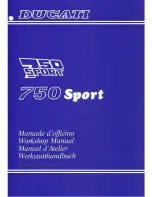
2-Stroke Pipe Installation
Thank you for purchasing an FMF pipe for your ride
.
We have spent countless hours of R & D and testing
to ensure you receive the highest quality product on the market today.
All FMF's products are developed using the most current design and manufacturing technologies available.
We use only the highest quality materials for function and durability. FMF pipes are manufactured from U.S. steel
and our Tru-Flo stamping process ensures quality control for fitment, reliability and unbeatable performance.
Whether it be Supercross, Motocross, GNCC, Desert or just plain old trail riding, with FMF you have a
choice. FMF pipes are engineered to have focused power gains to suit the needs of the rider under the conditions
they ride. Bolt on FMF performance and FEEL THE POWER!
Please read all instructions thoroughly before installation
. Failure to follow all installation instructions completely will void any
FMF warranty implied or otherwise. FMF Racing will not be held responsible for problems derived from improper installation and/or improper
usage.
Before you begin installing this product, be sure you are wearing
eye protection
and gloves. You should have a complete
understanding of how to remove and replace your stock exhaust. Otherwise you should have it installed by a professional mechanic. Keep all
OEM parts when removing your stock exhaust as some parts may be necessary to install the FMF exhaust depending on your particular
application.
1.
Make sure the engine is completely cool prior to installation and the vehicle is in a stable
position.
2.
If necessary, remove the plastic side panel piece to gain access to the silencer.
3.
Using a spring puller tool, remove the exhaust springs connecting the pipe to the exhaust port.
Keep for later use.
4.
Loosen all mounting hardware on the pipe and silencer using the appropriate wrenches.
5.
Remove the silencer from the subframe, keeping all mounting hardware.
*We recommend removing the silencer when installing a new pipe to insure proper fit and alignment.*
6.
Remove the pipe, keeping all mounting hardware.
7.
Remove any rubber grommets, o-rings or special hardware from the pipe.
8.
Using contact cleaner, clean the exhaust flange and/or cylinder exhaust port to remove all dirt
and debris. If applicable, remove o-rings and clean the grooves of the pipe flange.
9.
If your application uses an exhaust pipe washer/shim, make sure that is installed in the
cylinder before mounting the pipe.
R E M O V A L
OEM = Original Equipment Manufacturer
P R E - I N S TA L L AT I O N
T O O L S R E Q U I R E D
8mm Wrench
10mm Wrench
12mm Wrench
Contact Cleaner
High Temp Silicone
WD-40®
Spring Puller
ATTENTION
This product is designed for closed course use only unless otherwise stated and not intended to meet emission regulations
for use on public lands, roads, or access routes - consult with local jurisdictions.





















